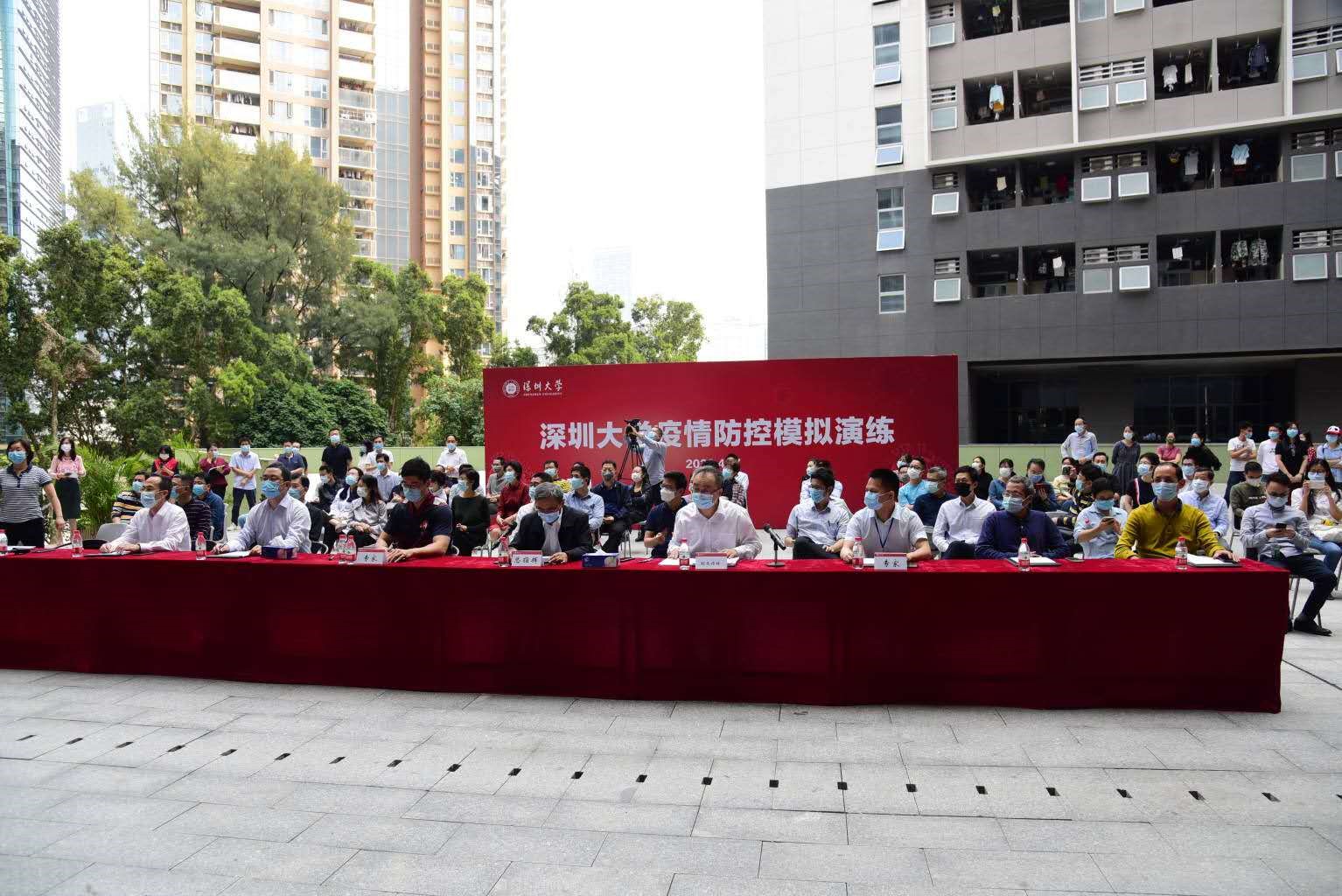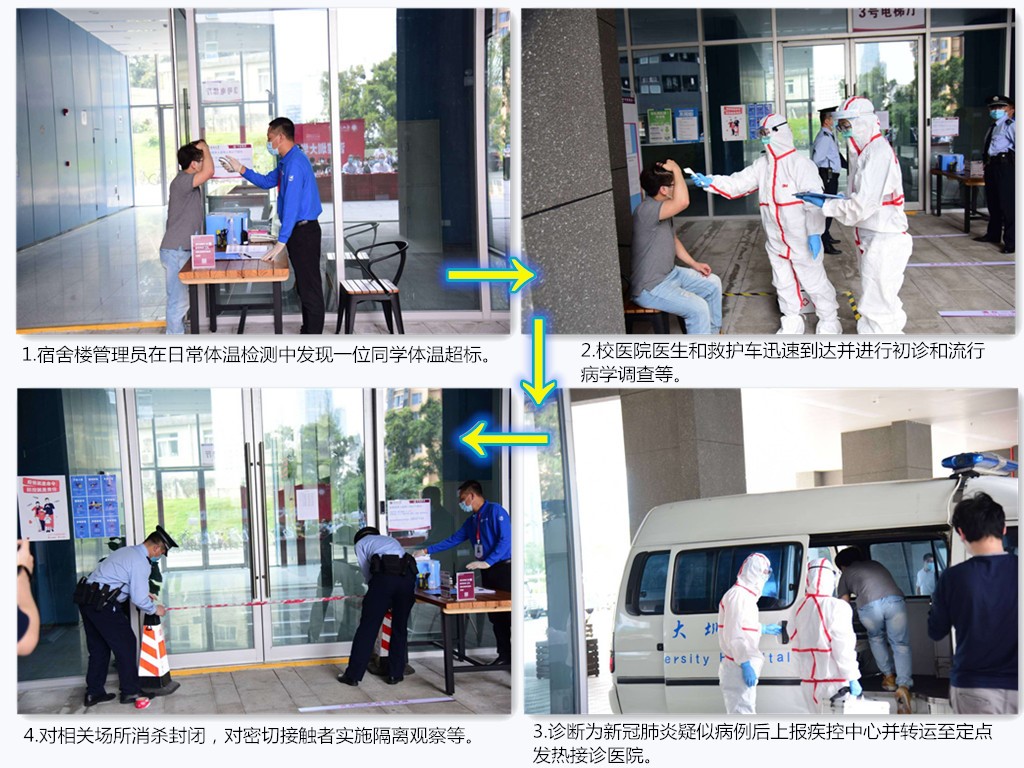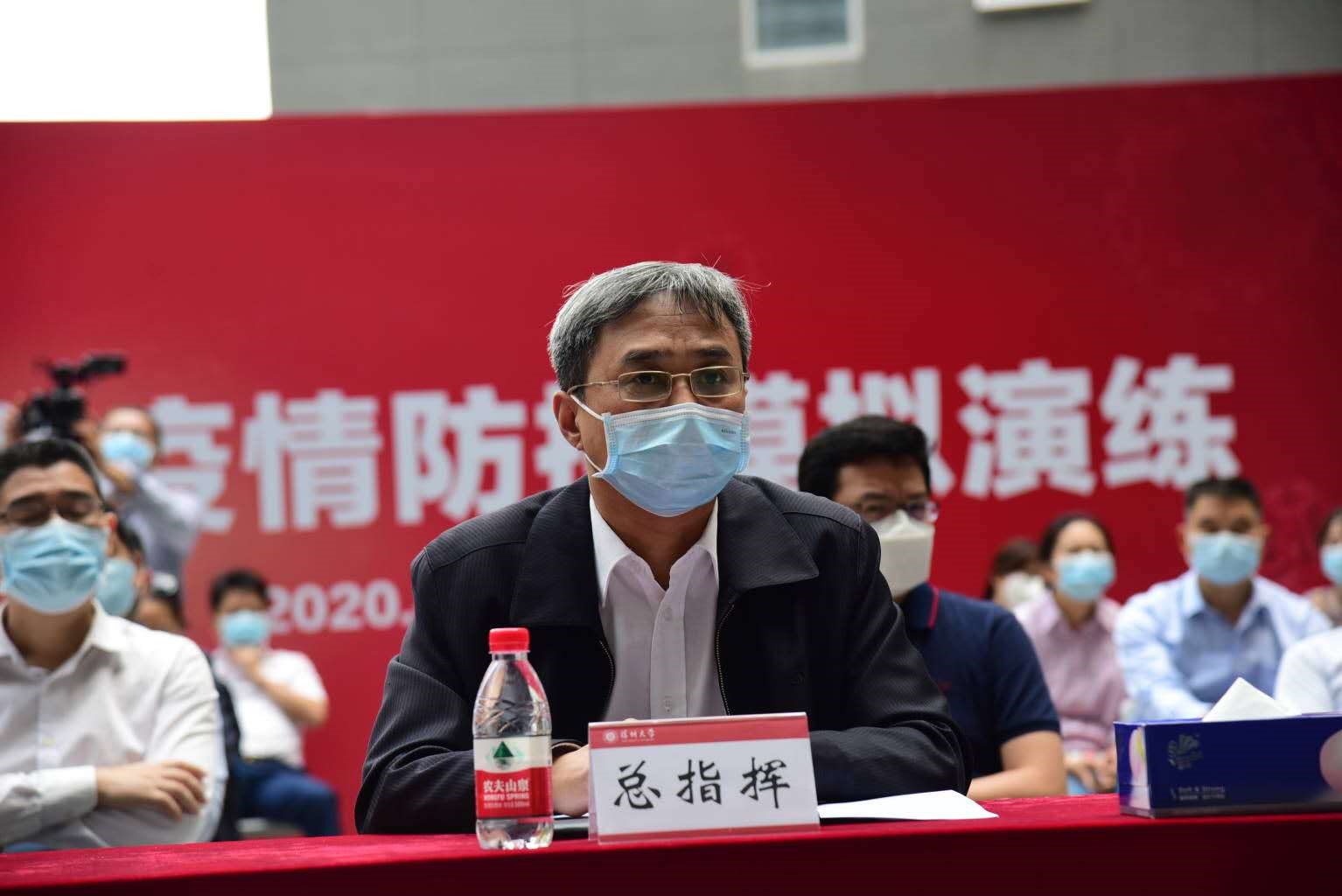On April 17th, Shenzhen University held a simulation exercise for epidemic prevention and control in Yuehai Campus, preparing for the students’ return. Vice President Wang Hui acted as the chief commander while the heads of relevant departments were present as observers. The simulation exercise was presided over by Liu Junshan, the director of the Office of Party and Government Affairs, and attended by Chen Qiaoyi, associate director of Yuehai Street Office in Nanshan District, and Wang Xin, the director of the Center for Disease Control Emergency Office in Nanshan District, as guests.

Prior to the simulation exercise, SZU made a detailed plan and set up and simulated several scenarios. At the same time, SZU has improved the plan based on previous simulation exercises and the development of the outbreak.
“Your temperature is 38.1 degrees. According to the requirements for epidemic prevention, we need to ask some questions. What is your name? Which college are you from? Which dormitory do you live in? Did you take the elevator or the stairs to come down? Which elevator did you take?” This is the emergency management for one of the scenarios of simulation exercise when a suspected case is found in the student dormitory.

(1. The resident assistant of dormitory building detects fever when a student’s temperature reads over 37.3°C in the daily temperature check.
2. Doctors and ambulance from the university’s hospital arrive rapidly and conduct preliminary diagnosis and epidemiological investigation.
3. After diagnosing the student as a suspected case of Coronavirus, report it to the CDC and transfer the student to designated hospitals.
4. Affected areas will be closed for disinfection and evacuation. Those in close contact with the suspected case will be quarantined and placed under observation.)
The screening process of the simulation exercise consists of many parts including detecting fever, epidemiological investigation, transfer to designated hospital, the patient’s schedule of daily routine, isolation of close contacts, disinfection and evacuation in affected areas, tracing the condition of students, reporting information related to the outbreak, students’ health and psychological guidance. Meanwhile, the simulation exercise for different scenarios took place in various areas such as at school gates, student canteens, and office buildings.

Chen Qiaoyi and Wang Xin made comments after completion of the simulation exercise, and they confirmed the efficiency of the screening procedure and coverage.
Wang Hui made a summary speech after this simulation exercise. He noted this was the first time that SZU had held a simulation exercise for epidemic prevention and control preparing for students’ return. Each department is required to keep three principles in mind: First of all, we should give priority to students’ and teachers’ health and ensure that the arrangement of learning, working and living is in place. Secondly, we should implement daily control measures and focus on the details of epidemic prevention and control. Thirdly, we should deal with emergencies scientifically and make sure that the immediate response strictly follows the preset process. We will hold this simulation exercise again before the return of students and teachers to ensure nothing goes wrong.

